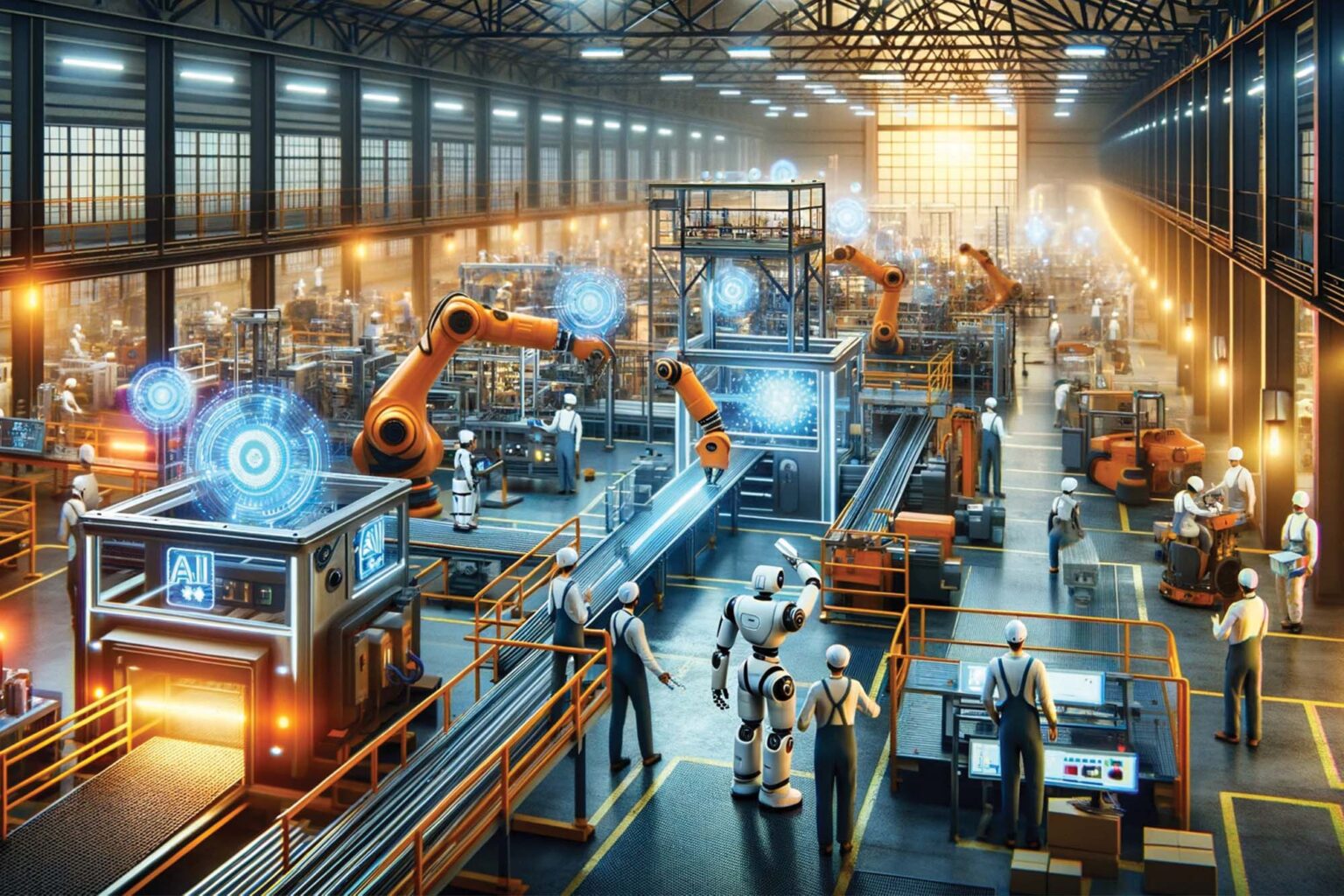The industrial landscape is undergoing a major transformation, thanks to the rapid advancement of the Internet of Things (IoT). Traditional factories are evolving into smart factories, where IoT-powered devices, sensors, and artificial intelligence (AI) work together to enhance efficiency, reduce costs, and improve decision-making. This revolution is reshaping industrial automation, making manufacturing more agile, data-driven, and sustainable.
In this blog, we’ll explore how IoT is revolutionizing industrial automation, its benefits, and the challenges businesses must navigate to maximize its potential.
The Role of IoT in Industrial Automation
The Internet of Things (IoT) is a network of connected devices and sensors that continuously collect, transmit, and analyze data in real time. In industrial settings, IoT facilitates seamless communication between machines, production lines, supply chains, and components like rotary actuators, which play a vital role in precise motion control. This interconnectivity transforms traditional factories into intelligent, automated ecosystems that optimize performance and efficiency.
IoT significantly enhances industrial automation by:
- Improving machine-to-machine (M2M) communication for better coordination
- Enabling real-time data monitoring and analysis to detect inefficiencies
- Enhancing predictive maintenance, reducing unexpected equipment failures
- Optimizing resource allocation for improved production flow
- Minimizing operational downtime through proactive system adjustments
By integrating IoT with automation technologies such as robotics, AI, cloud computing, and advanced rotary actuators, industries can create more agile, precise, and responsive manufacturing systems.
Key Benefits of IoT in Smart Factories
1. Predictive Maintenance and Reduced Downtime
One of the most significant advantages of IoT in industrial automation is predictive maintenance. IoT sensors continuously monitor machinery performance, detecting early signs of wear and tear. Instead of reacting to unexpected breakdowns, businesses can perform maintenance proactively, reducing unplanned downtime and avoiding costly repairs.
For example, a manufacturing plant using IoT-enabled machines can receive alerts when a component is close to failure, allowing timely replacement without disrupting operations.
2. Optimized Production Processes
IoT enables real-time monitoring and control of production lines, allowing manufacturers to optimize efficiency. Smart sensors track variables such as temperature, pressure, and vibration, ensuring that equipment operates at peak performance.
By analyzing this data, companies can fine-tune production settings, reduce waste, and increase output quality. For instance, in the food processing industry, IoT sensors help maintain precise temperatures, ensuring products meet safety and quality standards.
3. Energy Efficiency and Sustainability
Factories consume vast amounts of energy, and inefficient processes lead to unnecessary waste. IoT helps industries track energy consumption patterns and identify areas for improvement. Smart meters and sensors adjust power usage based on demand, reducing overall energy costs.
For example, automated lighting and climate control systems powered by IoT ensure that energy is used only when needed, reducing the factory’s carbon footprint. Sustainable manufacturing is becoming a priority, and IoT plays a crucial role in achieving greener industrial operations.
4. Improved Supply Chain and Inventory Management
IoT enhances supply chain visibility by tracking raw materials, inventory levels, and shipments in real time. RFID tags and IoT sensors provide accurate data on stock movement, preventing shortages or overstocking.
For example, automated warehouses use IoT to manage inventory efficiently, ensuring that parts and products are available when needed. This level of automation reduces human error and increases overall productivity.
5. Enhanced Worker Safety
Industrial environments pose safety risks to workers, but IoT technology helps improve workplace safety. Wearable IoT devices monitor worker health, detect hazardous conditions, and send alerts in case of emergencies.
For example, IoT-enabled helmets and vests can detect excessive heat exposure or toxic gas levels, preventing accidents before they happen. This technology not only protects workers but also ensures compliance with safety regulations.
Challenges of Implementing IoT in Industrial Automation
Despite its numerous benefits, integrating IoT into industrial automation comes with challenges:
1. Cybersecurity Risks
With increased connectivity comes the risk of cyberattacks. Hackers can target IoT-enabled systems, leading to data breaches or operational disruptions. Businesses must invest in strong cybersecurity measures, such as encryption, firewalls, and regular software updates, to protect their networks.
2. High Initial Investment
Implementing IoT infrastructure requires a significant upfront investment in hardware, software, and training. While IoT leads to long-term cost savings, smaller companies may find it challenging to afford the initial costs.
3. Data Management and Integration
IoT generates vast amounts of data, and managing it effectively can be overwhelming. Companies must invest in cloud computing and AI-powered analytics to process and extract meaningful insights from the collected data.
4. Workforce Adaptation
IoT and automation require a shift in workforce skills. Employees must be trained to work with IoT-driven systems, understand data analytics, and operate automated machinery. Investing in skill development programs ensures a smoother transition.
The Future of IoT in Industrial Automation
As IoT technology continues to evolve, its role in industrial automation will expand. Key trends shaping the future include:
- AI-driven automation: AI will enhance IoT capabilities, allowing for smarter decision-making and self-learning systems.
- 5G connectivity: Faster and more reliable networks will enable real-time communication between IoT devices, improving automation efficiency.
- Edge computing: Data processing will happen closer to the source (on the factory floor) rather than relying solely on cloud computing, reducing latency.
- Digital twins: Virtual replicas of factory processes will enable real-time simulation, testing, and optimization without disrupting actual production.
In Conclusion
IoT is revolutionizing industrial automation by transforming traditional factories into intelligent, data-driven ecosystems. From predictive maintenance and energy efficiency to enhanced worker safety and supply chain management, IoT-powered automation is making industries more efficient, sustainable, and competitive.
While challenges such as cybersecurity and high initial costs exist, businesses that embrace IoT will gain a significant edge in the evolving industrial landscape. As technology advances, smart factories will become the new standard, shaping the future of manufacturing for years to come.
Want more insights? Keep visiting Lotology for the latest updates and information!

